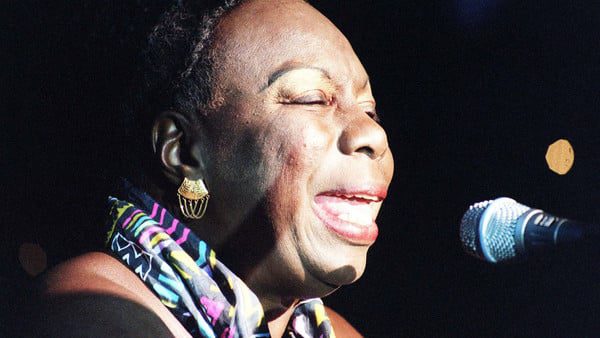Global Courant 2023-04-20 00:31:31
In the unforgettable scene that precedes the end of “Before Sunset” -the second film in the Richard Linklater saga that began with “Before Sunrise”- the character of Celine (July Delpy) places a record and begins to dance: “Just in time” by Nina Simone plays.
They are in an apartment in Paris, they had met again after nine years and they would separate again in a few minutes (“you are going to miss the plane”)… The waltz accompanied “You were for me that night, everything I always dreamed of in my life ”. Surely for many of those who enjoyed that saga it was the discovery, at the same time, of Nina Simone.
But she had died –just in France- on April 21 two decades ago, shortly before the premiere of that film. She was 70 years old, she went through a hectic life and left a musical legacy that time takes care of revaluing.
Curtis’s frustration
One of the most controversial episodes in Nina Simone’s life was her entrance exam to the Curtis Institute of Music in Philadelphia. It is a prestigious conservatory and Nina studied intensively for a year at another exclusive school, Juillard in New York, thanks to a scholarship.
“I never got over that jolt of racism,” she said, attributing her failing the exam to discrimination. According to her daughter Lisa she “carried the pain until her death”. Nina Simone took the exam on April 7, 1951 and the form for that day indicates that only three of her 72 applicants entered.
It is true that the United States was crossed by racism, but since high school they always denied that this influenced the result. This is how one of the last deans, Paul Bryan, expressed it: “I cannot comment on Miss Simone’s feelings, but I can affirm that the racial question did not influence at all.”
The pianist Vladimir Sokoloff, who later became Simone’s private teacher, maintained the same thing: “She was not accepted because others were better. She had great talent, but she was not a genius. I agreed to give him private lessons, with the idea of preparing a second audition. I made her see that her path was jazz, although she insisted on classical music.
On April 19, 2003, two days before her death, Nina received a document from Curtis – an honorary diploma.
The origins
Born Eunice Kathleen Waymon in Tryon, North Carolina, on February 21, 1933, she was the sixth of eight children born to a Methodist preaching couple.
It was there, in the midst of the religious songs, that he approached the music. They lived overwhelmed by poverty – at the time of the Great Depression – and racial discrimination, but someone saw him as a pianist and paid for his private lessons with a teacher, Muriel Massinovich.
Classical music caught on for Eunice/Nina, who was obsessed with becoming a world-class concert performer, until disappointment with the Curtis turned her around. As a young woman, she played in bars in Atlantic City but one night her patron at the Midtown Bar ordered her to sing.
“I am a pianist, not a jazz singer,” he claimed.
“Well, from tomorrow night you will be a singer. If not, you will be left without a job,” they intimidated her.
Nina’s name was suggested to her by a boyfriend at the time and Simone came up with Signoret, the fashionable French actress. Difficult to pigeonhole for music experts (jazz, blues, soul?) Nina Simone’s career took off immediately upon arrival in New York and her concert at Carnegie Hall in the early 1960s.
“It was around this time, in the mid-’60s, that I first began to feel the power and connect with spirituality while I was playing in front of my audience. I had been playing for ten years, but it was during those times that I could feel a state of grace on those occasions when everything seemed to fit perfectly. Those moments are very difficult to explain. I felt transported to a church; something that descended on me and made me disappear, a spirit that took me out of myself, ”she wrote.
Her musical talent –remained in the recordings and in the memory of distant witnesses- went hand in hand with a very difficult life, she suffered violence and family exploitation (her husband and manager Andrew Stroud was a former police officer) and discrimination. She reacted to the laziness of some audiences (in 1961 she yelled at the audience at the Apollo Theater in Harlem: “For the first time in your lives act like ladies and gentlemen”). She also stood up to the music industry: in 1977 she was summoned to a conference and shot the executives: “most of you are thieves.” She never forgot that the record company had cheated her on her first album “Little Girl Called Blue” by leaving her without royalties. But, at the same time, her version of Gerswhin’s classic Porgy and Bess propelled her straight to fame.
the militancy
Nina Simone. File photo taken on October 22, 1991 during a concert offered at the Olympia Music Hall in Paris.
On September 15, 1963, a bomb planted by the Ku Klux Klan in a Birmingham, Alabama home killed four black girls.
At the same time, civil rights activist Medgar Everts was murdered. Immediately Nina Simone wrote “Mississippi Goddam” (something like ‘damn you’) became the anthem of the rebellion of the black population and accompanied its most relevant demonstrations, such as the march from Selma to Montgomery in 1965.
Of course, it did not have the slightest chance of broadcasting on the radio or on TV. “I always thought she shook people up but now I want to shake her up more and I want to do it coldly, deliberately. I want to go into those clubs of fancy people, with their old ideas and their petulance, and drive them crazy, ”he exclaimed.
His militancy was extreme, intransigent. “To be Young, gifted and black” was another of her creations from that period, a tribute to her friend, the artist and activist Lorraine Hansberry. “Nina Simone was a real rebel,” said her musicians. She once approached Luther King himself and said, “I’m not a pacifist.” “Okay, sister, you don’t have to be,” the leader of the black community replied.
“I was never a pacifist. Never. I believe that the means to obtain our rights did not matter. I’m just one of the people who are fed up with this social order, fed up with the established order, fed up to the bone with it all. To me, American society is nothing more than a cancer that must be exposed in order to be cured. I cannot cure it: I can only expose the disease”, Nina said. She had become radicalized. But when Luther King was assassinated in Memphis in April 1968, she decided to leave the United States for good.
Three days after the crime, she went up on stage at the Westbury Fair and sang a thirteen-minute song, dedicated especially to the Nobel: “The king of love is dead.”
He passed through Barbados and finally settled in Liberia, in the heart of Africa and in the most extreme poverty. He finally settled in France. He withdrew from family, friends and the industry, although he returned from time to time.
documentation
Zoe Saldana, in the role of Nina Simone.
The recovery of the figure of Nina Simone occurred through the new versions of her songs, from Tracy Chapman onwards, from different books -including an autobiography- documentaries and films. One of them (“Nina”), starring Zoe Saldaña, passed without much success, but the documentaries revealed more.
The first was “The Legend”, produced by the BBC with Nina Simone still alive, but the most recent is “What Happened, Miss Simone” directed by Liz Garbus and got an Oscar nomination. Lisa, the daughter of Nina Simone, was the producer of that documentary and she revealed there, for the first time, the mistreatment to which she would have been subjected.
The documentary revolves more in the orbit of family, friends and militants, rather than in the opinion of music scholars and sociologists. “I’m the one who has to live with Nina” is his own justification.
Simone had left her memories in “Victim of my spell” where, in the manner of Neruda, she expressed: “I confess that I have lived.” She affirms that “I do not regret anything” and she celebrates “the happiness of marching for the rights of my brothers”. The writer James Baldwin left her a phrase that also symbolized her life and that book: “Nina, this is the world that you yourself have created. Now you have to live in it.”




